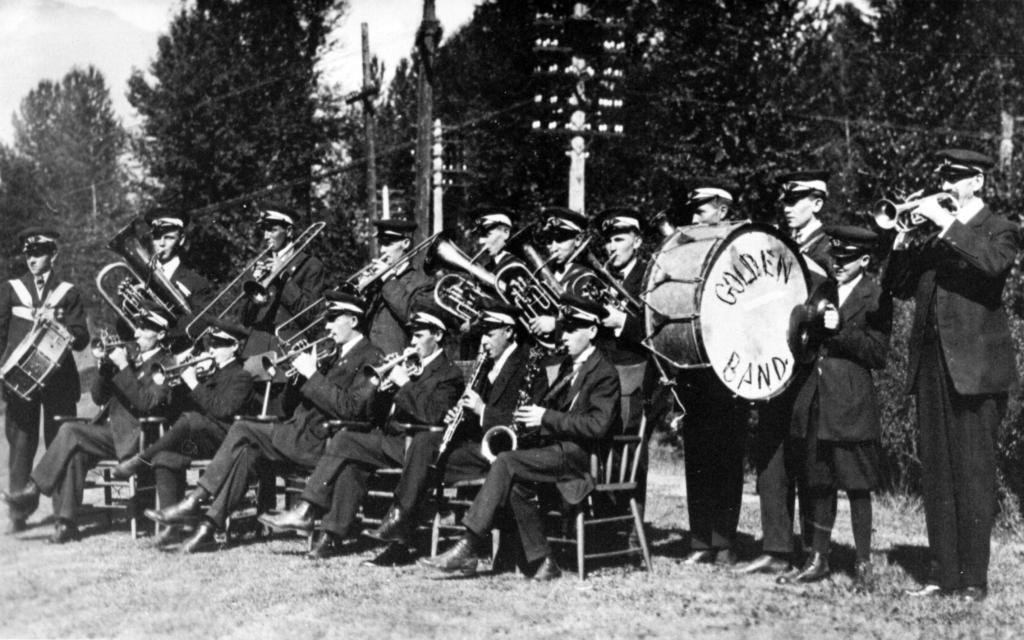Golden Band Stand

Valley View Point by Chris Schiesser – May 6, 1970
Not many residents realize that Golden did possess both a band and a bandstand in its early prosperous days from 1909 to 1914. The one remaining member of the first Golden Band, Mr. W. Wenman, recollects that the circular bandstand was near the post office, and here of an evening residents could enjoy the music produced by some twenty players, numbering 4 cornets, 2 alto horns, 1 saxophone, a baritone, tenor and bass trumpet, 1 piccolo, 3 clarinets, 3 trombones, 2 snare drums, 1 bass drum and cymbals. During the summer they often gave three concerts a week, and also played at Strawberry Socials, then a popular means of raising money for the churches. On these last occasions their reward was a free dish of delicious berries and cream (the real thing). They also performed for special events held in the Park, and sometimes visited Field to perform there. In the event of being paid the money helped to defray some of the cost of their instruments and music, an outlay made by each musician. The most enjoyable times seem to have been when the river boats were the chief means of transportation to the south. Usually after unloading the boat would remain a day or so awaiting their cargo, and so it happened that once or twice a month the crew would run an excursion trip to Carbonate Landing, now known as McMurdo, for the local population to enjoy a picnic there along with the thrill of a boat ride. School children were free on such occasions whole adults for a small sum could enjoy a dance on a large scow pushed by the steamboat on board of which the band played into the small hours of the night. In winter the band played in the rink for skating every Friday evening and enjoyed the refreshments supplied by the curling club.
But 1914 came and soon all the able young men enlisted and for a decade the instruments were put away and the empty bandstand vanished, no longer needed. Some twelve of the original band members returned, but not until 1925 did they reorganize, with new players to replace the missing ones. But the rivers boats no longer operated and the simple pioneer life was changing. However, there were still May Day celebrations and sports events to be enlivened by their music, and now they travelled to Revelstoke as well as to Field to perform. An orchestra was also formed to play for local dances, the piano augmented by a mandolin, banjo, 2 violins and a cornet. Alas, the depression followed by the second war again silenced the music of the band, and although later a Boys’ Band was formed and flourished for a time under the leadership of George Keenleyside this did not survive the growing impact of “canned music”. Several efforts were made to form a school band, but not until proper provision was made in the High School for music instruction did it become a reality.
